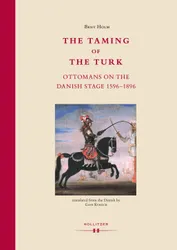For centuries the figure of ‘the Turk’ spread fascination and fear - in the theatre of war and on the theatrical stage. On the one hand, ‘the Turk’ represented a spectacular dimension, an imaginary world of pirates, sultans and odalisques; on the other hand, he stood for the actual Ottoman Empire, engaged in long-lasting confrontations and exchanges with Occidental powers. When confronted with historical circumstances - military, commercial and religious - the cliché image of ‘the Turk’ dissolves in complex combinations of potential references.
The Taming of the Turk: Ottomans on the Danish Stage 1596-1896 elucidates, for the first time, three centuries of cultural history as articulated in dealings between the Kingdom of Denmark and the Ottoman Empire seen in a general European context. From the staging of ‘the Turk’ as a diabolical player in royal ceremonies of early modern times, to the appearance of harmless ‘Turkish’ entertainment figures in the late nineteenth century. Artistic, theatrical and theological conceptions co-act in paradoxical ways against a backdrop of pragmatic connections with the Ottomans.
The story of this long-forgotten connection between a small northern-European nation and a mighty Oriental empire is based on a source material - plays, paintings, treaties, travelogues etc. - that has hitherto chiefly been neglected, although it played a significant role in earlier times. The images of ‘exotic’ figures sometimes even turn out to be self-images. The documents hold the keys to a number of mental and fundamental (pre)conditions, and thus even to imagery constructions of our day.



